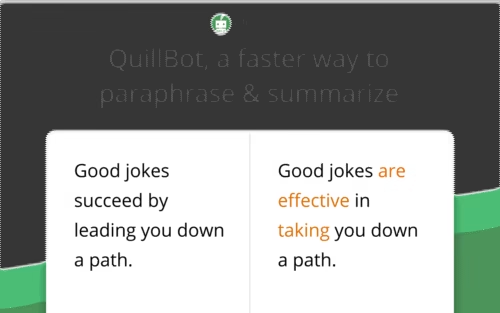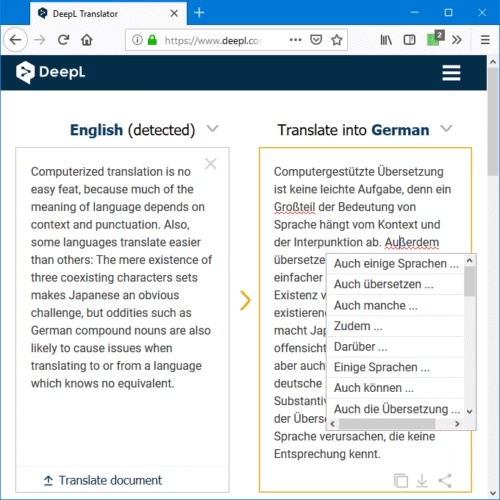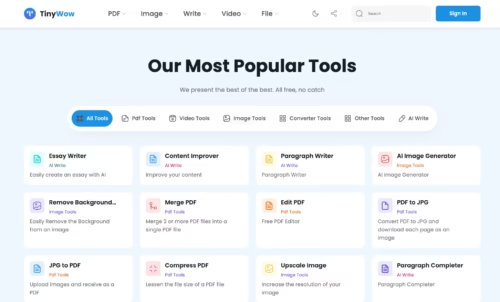Students want tools that work now. Open, paste, get results. No accounts, no spam. This guide covers the best free ai tools for students no sign up, verified to work in one minute.
Here’s what to expect. Quick picks by task, clear criteria, and deep dives with 1-minute demos. You’ll get prompts, limits, privacy notes, FAQs, and a bookmarkable checklist. Use this for studying, notes, citations, math, coding, slides, and languages.
AI is changing classrooms worldwide, from flashcards to full lessons. For context on real-world adoption, see Thailand’s AI educational revolution with RevisionSuccess. Bookmark this guide, tools change often.
Quick picks (no sign-up): best free AI tools for students no sign up
Open, paste, get results. These quick picks work in the browser with no account for core features. Each one is fast, beginner-friendly, and useful for studying, writing, math, and citations.
For a broader context on free, at-a-glance options students can try, see Google’s roundup of AI tools you can start using for free, and this large, category-based directory of free AI tools.
QuillBot Paraphraser
Best for quick rewrites and clarity on short passages. No login for basic paraphrasing. Useful for trimming sentences or rewriting awkward lines.
- Free use: short text paraphrasing, simple tone presets
- Limits: character caps apply, advanced modes require sign-in
- Tip: Use it to brainstorm alternatives, then revise in your own words
DeepL Translator and Write
Best for translation and light style suggestions. No account needed for core translation. Strong for language learning and polishing short responses.
- Free use: translate text and web pages, basic “Write” suggestions
- Limits: character caps, document uploads may be restricted
- Tip: Compare DeepL output with your draft to keep your voice
TLDR This
Best for quick summaries of articles and webpages. Paste a URL or text, then get a short, clean summary. No login for the core flow.
- Free use: short or detailed summary options
- Limits: length caps, complex PDFs may not parse
- Tip: Pair with your notes to confirm key points
SMMRY
Best for instant text-only summaries. Paste the content and pick the number of sentences. Simple, fast, and no sign-up.
- Free use: sentence-length control, keyword focus
- Limits: text-only, no citations or references
- Tip: Use for first-pass skims before deep reading
MyBib
Best for citations by URL, DOI, title, or ISBN. No account required to generate and export references. Supports APA, MLA, Chicago, and more.
- Free use: create and copy citations, export to BibTeX or Word
- Limits: always verify fields against your rubric
- Tip: Cross-check citations with your course guide
Wolfram Alpha
Best for math, science, quick facts, and unit conversions. No login for core queries. Helpful for checking steps and exploring functions.
- Free use: instant answers, plots, definitions
- Limits: some step-by-step solutions are paywalled
- Tip: Ask for “step-by-step” first, then adjust if needed
TinyWow AI Tools
Best for one-stop quick utilities. Includes summarizers, paraphrasers, PDF helpers, and image tools. Most features run without an account.
- Free use: many text utilities and file tools
- Limits: daily caps may apply, exports vary by tool
- Tip: Use text tools only, avoid uploading private documents
Recommended use: pick one summarizer, one rewrite tool, and one citation generator. That trio covers most study needs in under a minute per task.
How we picked: clear criteria and verification for no-login tools
This list focuses on tools students can open and use in one minute. The goal is a reliable, repeatable process that filters out paywalls, forced sign-ups, and risky data practices. Every tool was tested on desktop and mobile, using the same prompts and tasks students run during study sessions.
What “no sign up” means in this guide
No account, no email, no phone, and no credit card to try the core feature. A tool can offer optional sign-in for extras, but the primary function must work instantly in the browser.
- No registration walls for the first output
- No forced social logins to unlock basic results
- No hidden waitlists for free use
Core selection criteria
Each tool had to meet practical standards for speed, accuracy, and student needs. The table below shows the baseline.
| Requirement | What we tested | Pass condition |
|---|---|---|
| 100% no login for core feature | First result from paste to output | Output within 60 seconds |
| Free today | Live test on the current date | No card, no trial, no waitlist |
| Student utility | Summaries, notes, citations, math, code, slides | Clear value for coursework |
| In-browser, mobile-friendly | Chrome and Safari on phone and laptop | Usable on a small screen |
| Reasonable limits | Daily caps, character limits, watermark rules | Free tier usable for a short assignment |
| Privacy clarity | Public privacy policy and data notes | No student essays are stored without consent |
For a practical look at getting value from free tiers, see TCEA’s guide on getting the most out of free AI tools.
The verification process we used
Consistency matters. We used a fixed checklist for each tool to confirm it was truly among the best free ai tools for students no sign up.
- Open the tool in a fresh browser profile.
- Paste sample inputs: a 400-word passage, a news URL, one DOI, a fundamental algebra problem, and a short code snippet.
- Run the core feature without logging in.
- Record time to first output and note any caps or watermarks.
- Test on mobile for layout and copy/export steps.
- Re-test with a second document or URL to confirm repeatability.
If a tool blocked output or switched to a sign-in gate, it was removed.
Privacy and safety checks
Student work is sensitive. We reviewed public policies, upload page prompts, and data collection banners.
- We looked for clear statements that content is not used to train models unless consent is given.
- We avoided tools that auto-store full text by default. When in doubt, we advise paste-only for non-sensitive notes.
- We flagged trackers and aggressive ads that disrupt study flows.
- For broader decision-making tips on trust and fit, see this overview on choosing the best free AI for your needs.
Also see a case study of student-built tooling in Thailand, focusing on classroom impact and access, in this report on Thai students’ AI-powered RevisionSuccess platform.
Accessibility and performance tests
Speed and readability were tested under typical school conditions.
- Load time on campus Wi-Fi and cellular
- Font size and contrast for long reading sessions
- Copy, export, and share steps under 30 seconds
- Reliable outputs on repeated runs
We favored tools that delivered a clean UI, clear buttons, and near-instant feedback.
Ongoing monitoring and update policy
No-login tools change often. We track availability and limits, then retest each month or after reader reports.
- We check for new sign-in walls and shrinking free caps.
- We swap in backups when a tool degrades.
- We label limits and last verified dates in tool entries so readers know what to expect.
This process keeps the list accurate and valuable. If a tool flips to sign-in required, we update and offer an alternative that still works today.
Top tools with 1-minute demos (no account needed)
This section focuses on practical, no-login tools you can open and use in one minute. Each entry includes a clear use case, a short demo, limits, and privacy notes. The goal is speed and utility for real study tasks. These are among the best free ai tools for students no sign up, tested for fast output in the browser.
Summaries, notes, and quick research (free AI summarizer for students)
Clear, short summaries help you scan sources before deep reading. The tools below handle paste-and-summarize and quick research overviews.
- ChatGPT (Guest) – https://chat.openai.com/ or https://chatgpt.com/
- Best for: quick Q&A, short summaries, idea maps.
- Why it’s excellent: instant answers and drafts without creating an account.
- 1-minute demo:
- Paste a paragraph.
- Type: “Summarize in 3 bullets.”
- Copy the output to your notes.
- Limits: guest Mode has usage caps; responses are shorter.
- Privacy: guest chats may be used to improve models; avoid sensitive data.
- Alternatives: SMMRY for text-only summaries.
- Alt text idea: “ChatGPT guest mode giving a 3-bullet summary, free ai study tools no login.”
- SMMRY – https://smmry.com/
- Best for: fast paste-and-summarize with length control.
- Why it’s excellent: zero friction; clean text-only output.
- 1-minute demo:
- Paste an article or URL.
- Click Summarize, adjust sentence count if needed.
- Copy the result.
- Limits: very long docs may need trimming; text-only.
- Privacy: content processed in session.
- Alternatives: ChatGPT guest, Elicit for papers.
- Elicit – https://elicit.org/
- Best for: quick paper overviews, key findings, and basic citations.
- Why it’s excellent: helpful for scanning academic directions before deep reading.
- 1-minute demo:
- Type a research question.
- Scan results and pull key points.
- Copy findings and references to your notes.
- Limits: about 30 queries per month free without a login.
- Privacy: minimal personal data when used without an account.
- Alternatives: manual checks on Google Scholar.
Fact-check tip: skim sources, verify claims with a second reference, and watch for confident but incorrect statements. When a summary looks too neat, scan the article’s methods and conclusions before citing. For a broad look at current no-signup picks, see this concise roundup of free AI tools with no signup.
Study helpers: flashcards and self-quizzes from your notes
Turn notes into small, focused practice sets you can review anywhere. Keep inputs short for the best results.
- ChatGPT (Guest) – https://chat.openai.com/ or https://chatgpt.com/
- Best for: building quick flashcards from pasted notes.
- Why it’s excellent: lightning-fast term-definition cards for a short topic.
- 1-minute demo:
- Paste a short section of notes.
- Prompt: “Make 10 term-definition flashcards.”
- Copy cards to a doc or slide.
- Limits: guest caps; keep requests small for speed.
- Privacy: do not paste private info or identifiers.
- Alternatives: Use SMMRY first to condense long notes.
- Quizlet AI flashcards preview – https://quizlet.com/ (availability varies by region)
- Best for: turning short notes into reviewable flashcards in the browser.
- Why it’s great: quick generation and instant study flow without saving.
- 1-minute demo:
- Paste a small chunk of notes.
- Generate flashcards with the preview.
- Review in the same tab.
- Limits: Some features require a login to save sets; use preview only.
- Privacy: see Quizlet policy; avoid personal data.
- Alternatives: use ChatGPT to generate cards, then paste them into a Google Doc.
Mobile tip: keep sets small and focused, like 8 to 12 cards per topic, so that you can review during short breaks.
Writing helpers: no sign up ai writer free for brainstorming and edits
Use AI to plan, outline, and revise. Write your own final draft. Keep prompts short and clear for better control.
- QuillBot – https://quillbot.com/
- Best for: paraphrasing, grammar, and tone tweaks.
- Why it’s excellent: trims awkward lines and tightens clarity without a login.
- 1-minute demo:
- Paste up to 125 words.
- Click Paraphrase or Grammar.
- Copy edits and revise in your own words.
- Limits: 125-word cap per input; limited modes on free.
- Privacy: no account needed; avoid sensitive content.
- Alternatives: ChatGPT guest for outlines and thesis statements.
- ChatGPT (Guest) – https://chat.openai.com/ or https://chatgpt.com/
- Best for: outlining, generating thesis ideas, and brainstorming topics.
- Why it’s excellent: fast structure and direction for a new assignment.
- 1-minute demo:
- Prompt: “Give me a 5-point outline on [topic] with a working thesis.”
- Ask for a stronger hook or one supporting argument.
- Copy the outline and write your draft.
- Limits: guest caps and shorter responses.
- Privacy: guest content may be used to improve models; rewrite before submitting.
Note on academic integrity: cite sources, write your own final draft, and do your own edits. Use quotes when copying phrasing. If AI suggests a claim, verify it with a credible source before including it. For free services you can try today, see this quick scan of no-signup AI tools.
Math and code explainers that work in your browser
Use these for clarity on steps and for short code explanations. Keep questions specific and avoid private data.
- Symbolab – https://www.symbolab.com/
- Best for: algebra, calculus, step-by-step solutions.
- Why it’s excellent: shows method and solution flow.
- 1-minute demo:
- Type: “solve 3x + 5 = 20”.
- Click Solve.
- Review steps and copy the key idea.
- Limits: a few problems per day free; some steps may be paywalled.
- Privacy: session-based; no account needed.
- Alternatives: Wolfram Alpha basic, free for many queries.
- Wolfram Alpha – https://www.wolframalpha.com/
- Best for: math checks, science facts, plots, unit conversions.
- Why it’s excellent: broad coverage with instant results.
- 1-minute demo:
- Paste a function or problem.
- Ask for “plot” or “step-by-step” if available.
- Copy key steps or results.
- Limits: Some step-by-step features are paid.
- Privacy: no login needed for basic use.
- ChatGPT (Guest) – https://chat.openai.com/ or https://chatgpt.com/
- Best for: explaining what code does and simple debugging.
- Why it’s excellent: fast plain-English explanations for short snippets.
- 1-minute demo:
- Paste a short function.
- Prompt: “Explain what this code does in simple words.”
- Ask for an example input and output.
- Limits: do not paste private repos, API keys, or credentials.
- Privacy: guest Mode; avoid sensitive data.
Caution: never share private data, student IDs, or full homework sheets that include personal identifiers.
Media and slides: instant images and voice without accounts
Simple visuals and voice clips can lift presentations. These tools can be exported quickly without an account.
- Remove.bg – https://www.remove.bg/
- Best for: removing image backgrounds for slide decks.
- Why it’s excellent: one-click background removal for clean cutouts.
- 1-minute demo:
- Upload an image.
- Wait about 5 seconds.
- Download the PNG and place it on your slide.
- Limits: low-resolution export is free; high-res may require credits.
- Privacy: images are processed on the server; avoid personal photos.
- Alternatives: Adobe Express background remover may add a watermark or ask for login later.
- TTSMP3 – https://ttsmp3.com/
- Best for: text-to-speech audio for study notes or slides.
- Why it’s excellent: multiple voices and instant MP3 without sign-up.
- 1-minute demo:
- Paste your script.
- Select a voice and language, click Convert or Play.
- Download the MP3 and drop it into your slides.
- Limits: roughly 3,000 characters per day free.
- Privacy: audio files are temporary; no account data is stored.
Slide tip: write short captions and add descriptive alt text. Example: “instant ai tools for homework infographic with three bullet benefits.” For students who want a broader map of free AI services, Google’s list of AI tools you can start using for free gives a sense of what is possible without signing up.
Key reminder on accuracy and bias: verify facts before citing, compare outputs from two tools, and always check numbers, names, and dates against the source. This protects grades and builds trust in your work.
Use cases, prompts, and ethics: get results fast and stay safe
This section shows how to get quick wins from the best free ai tools for students no sign up with clear prompts and safe practices. It covers everyday study tasks, ready-to-copy prompts, and a simple integrity checklist. Keep inputs short, verify outputs, and keep schoolwork private.
Quick wins by task: prompts that work in one minute
Short, direct prompts produce faster and cleaner results. Copy these formats and swap in your topic or text.
- Summary
- Prompt: “Summarize this in 3 bullets, plain language, include one number or date if relevant.”
- Use with: paste text or URL, then adjust the bullet count.
- Study notes
- Prompt: “Extract five key points and three terms to know. Keep under 120 words.”
- Use with: lecture notes, textbook paragraphs, or articles.
- Flashcards
- Prompt: “Make 10 term-definition flashcards from this text. Use simple language.”
- Use with: short notes or a section of a chapter.
- Rewrite for clarity
- Prompt: “Rewrite this to be clearer and shorter, keep the meaning, 2-3 sentences max.”
- Use with: awkward lines from drafts.
- Thesis and outline
- Prompt: “Give a 5-point outline with a working thesis on [topic]. Include one counterpoint.”
- Use with: early-stage planning.
- Math steps
- Prompt: “Show the steps to solve [problem]. Explain each step in one line.”
- Use with: algebra or calculus items.
- Code explanation
- Prompt: “Explain what this function does in plain English. Then give a simple example.”
- Use with: small snippets only, no private code.
- Citations
- Prompt: “Generate APA and MLA citations for this DOI/URL. Flag any missing fields.”
Prompt templates students can reuse
A few reusable patterns save time across tools. Keep them short and explicit.
- Format-first template
- “Output format: [3 bullets, 120 words]. Task: [summarize main idea and two supporting points]. Constraints: [no quotes, no fluff].”
- Compare-contrast template
- “Compare these two concepts in 5 bullets total. Use parallel structure and one example.”
- Explain-like-I’m-studying template
- “Explain this for a first-year student. Define terms, give one analogy, under 150 words.”
- Checklist template
- “Turn this into a checklist I can review in 60 seconds. Group by steps.”
- Verify template
- “List claims in the text that need a source. Output as bullet points with suggested search terms.”
One-page prompt planner for common tasks
Use this planner to move fast and keep results tidy.
| Task | Goal | Prompt starter | Good for |
|---|---|---|---|
| Article summary | 3 key points | “Summarize in 3 bullets, include one fact or date.” | Skimming sources before deep reading |
| Notes to flashcards | Term recall | “Create 10 term-definition cards from this text.” | Quiz prep |
| Draft polish | Clear and concise | “Rewrite to be clearer and shorter, keep meaning, 2-3 sentences.” | Final pass on a paragraph |
| Outline + thesis | Structure | “Make a 5-point outline with a working thesis on [topic].” | Starting an essay |
| Math steps | Method clarity | “Solve and show steps, one line per step.” | Practice problems |
| Code explain | Understanding | “Explain the function in plain English, then give one example.” | Reading unfamiliar code |
| Citation check | Accuracy | “Generate APA and MLA for this URL or DOI, note missing fields.” | Bibliography cleanup |
Safe inputs: what to paste and what to avoid
No-login tools are fast, but inputs matter. Keep private data out of prompts and uploads.
- Safe to paste
- Public article text or URLs
- Short homework questions without personal details
- Your paraphrased notes, not complete essays
- Avoid pasting
- Names, student IDs, emails, or photos
- Complete assignments with personal information
- Private code, API keys, or proprietary data
- Safer workflow
- Paste only a paragraph, not the whole paper
- Remove names and identifiers
- Screenshot sensitive pages and summarize in your own words
For classroom guidelines on responsible use, see Harvard Graduate School of Education’s overview on developing AI ethics in the classroom.
Academic integrity: use AI to learn, not to replace learning
Free ai study tools no login can support planning and review. Final work should be your own.
- Allowed support
- Brainstorm topics and outlines
- Clarify complex ideas
- Summarize long sections for review
- Generate practice questions
- Not allowed
- Submitting AI-written essays as original work
- Fabricating sources or quotes
- Hiding AI use when policies require disclosure
- Good practice
- Write your own draft after using prompts
- Cite real sources you actually read
- Keep a short note of how AI helped, if required by your instructor
For a concise ethics primer, see James Madison University Libraries’ guide on AI and ethics in education. A practical checklist for students is available in this list of ethical AI practices for schools.
Fact-checking and bias checks in under two minutes
Outputs can be wrong or too confident. Run a quick check before using it in assignments.
- Verify names, numbers, and dates against the source
- Cross-check two independent sources for claims
- Scan the original abstract or methods for scientific papers
- Look for hedging language that signals uncertainty
- Run a second tool for the same prompt to compare results
Simple search prompts help confirm details:
- “site:.edu [term] definition”
- “site:.gov [statistic] [year]”
- “[study name] PDF abstract”
Privacy basics for no-login tools
Privacy varies across tools. When in doubt, keep prompts short and anonymized.
- Read the first paragraph of the tool’s privacy page
- Assume content may be logged for quality checks
- Use paste-only for non-sensitive text
- Prefer tools that do not store full input content
- Clear the browser tab or use a private window after use
Fast prompt troubleshooting
When results miss the mark, change one thing at a time.
- Reduce scope: ask for three bullets, not a full page
- Add a format: “Output as bullet list” or “120 words”
- Provide a model answer: paste a short example of the style you want
- Split tasks: summarize first, then request flashcards from the summary
- Re-run on a smaller excerpt for better focus
Ethics quick checklist before you submit
Run this 6-point check to stay safe and aligned with course rules.
- The final draft is written in your words.
- All facts and citations are verified with real sources.
- AI text is used for planning or review, not the final submission.
- No personal or private data was pasted into tools.
- Any required disclosure about AI use is included.
- You can explain your work without the tool open.
Used well, ai tools for students without account save time on routine tasks and support learning. Keep prompts short, keep data private, and keep authorship yours. This approach fits the promise of instant ai tools for homework while protecting academic integrity.
FAQs about free ai study tools no login
This FAQ covers safety, detection, limits, and practical use of free ai study tools no login. Answers are short, direct, and focused on student needs. The goal is to help you use the best free ai tools for students no sign up, without risking grades or privacy.
Are no-sign up AI tools safe for school?
Most are safe to try for basic tasks. The risk varies by site.
- Use only public, non-sensitive text.
- Avoid pasting names, emails, IDs, or private code.
- Prefer tools with a clear privacy page and visible contact info.
For general student-focused guidance and training, see Google’s resource on AI training and tools for students. It outlines practical use and safety basics.
Can teachers detect AI-written text from no-login tools?
Yes. Many schools use detectors and manual checks. Detection is not perfect, but patterns show.
- AI-generated text often makes generic claims and uses smooth, vague language.
- Rewriting with your own voice reduces risk, but you must cite facts.
- Best approach: use AI for planning, then write your own draft and verify sources.
How should I use these tools ethically for homework?
Keep AI as a study assistant, not a ghostwriter.
- Use for outlines, summaries, flashcards, and explanations.
- Write the final draft yourself.
- Cite real sources you actually read.
- If your class requires disclosure, add a short note on how AI helped.
What if a tool suddenly asks for an account?
It happens. Tools change limits and access rules.
- Try a second free option in the same category.
- Keep a short list of backup sources for summaries, paraphrases, and citations.
- If a site moves to login or a waitlist, do not force it. Switch.
You can keep a personal shortlist of backups by category. For example, a summary tool, a paraphraser, and a citation generator. This avoids getting stuck mid-assignment.
Do free, no-login tools store my data?
Some log input for quality checks. Others process in session only.
- Assume inputs may be stored briefly on servers.
- Do not paste private or complete assignment text.
- Clear the tab and use a private window for sensitive topics.
A simple rule helps: paste a paragraph, not the whole paper. Remove names and identifiers before you run a prompt.
Will these tools cite sources correctly?
They can miss fields or format details. Always verify.
- Cross-check author, title, date, and DOI.
- Compare with your style guide or a trusted library resource.
- For a broader overview of study tools and workflows, this guide to free AI study tools for learning outlines standard options and study methods.
Good practice: generate a citation, then confirm each field against the source page.
What limits should I expect on free tiers?
Expect caps, and plan around them.
- Character or word limits per input.
- Daily request caps.
- Watermarks or lower resolution on media exports.
- Some features, like step-by-step math, may be paywalled.
Work within caps by chunking text. Summarize in parts, then combine.
Are there good options for mobile use?
Yes. Many no-login tools work well in the browser on phones.
- Look for simple UIs with big buttons and quick copy.
- Keep prompts short for small screens.
- Save results to your notes app or a cloud doc.
For free workshops and student-friendly tips, Google’s page on AI training and tools for students offers guidance suited to mobile workflows.
Can I use these tools for languages, math, and code?
Yes, with scope control.
- Languages: short translations, vocabulary, and tone checks.
- Math: quick steps and function checks, but verify methods.
- Code: explain small snippets and sample inputs, never paste private repos or keys.
Keep inputs small and specific. Ask for steps or a one-paragraph explanation.
How do I avoid plagiarism when paraphrasing?
Use paraphrasing for clarity, not to dodge citations.
- Keep the original meaning. Change the structure and words in your own way.
- Always cite facts, stats, and unique ideas.
- After paraphrasing, read aloud and edit for your voice.
If the sentence is distinctive or core to an argument, quote it and cite.
What should I do if outputs are wrong or vague?
Tighten the prompt and verify.
- Reduce the scope: ask for three bullets or 120 words.
- Add a format instruction, like “output as bullet list.”
- Compare two tools to spot errors.
- Verify numbers, names, and dates with the source.
A second pass often fixes weak answers. Short, concrete prompts get better results.
Do region or school networks affect access?
Sometimes. Tools can throttle or block by region or IP.
- Try a different browser or a private window.
- Switch from Wi-Fi to cellular if a campus filter is strict.
- If a tool is blocked, use a backup option in the same category.
Avoid VPNs on school devices if your policy restricts them.
Are there reputable free study platforms to try first?
Yes. Look for clear privacy notes and visible limits. Product pages can help you scan features, like the quick-start summaries and flashcards on Penseum’s free study guide maker or the multi-format outputs in Mindgrasp’s learning platform. Test without logging in, verify limits, and keep backups.
Quick checklist for using no-login tools
Use this short list before you paste.
- Remove names and personal details.
- Paste only what you need, not the full document.
- Ask for short outputs in a set format.
- Verify key facts and citations.
- Write final drafts in your own words.
- Save a backup tool for each task category.
Used with care, ai tools for students without an account can speed up study tasks and protect your privacy. Keep prompts tight, verify outputs, and maintain authorship. This approach fits instant ai tools for homework while staying aligned with academic rules.
Conclusion
The best free ai tools for students no sign up make study sessions simple, open, paste, get results. No accounts, no spam. You get fast summaries, clean paraphrases, citations, math checks, and quick slides without friction, which supports focused work and better outcomes.
Download the checklist to move faster; it includes tool names, direct links, and quick limits in a ready-to-copy Google Doc format. Last updated October 2025, this guide will refresh monthly to reflect access changes and new no-login options.
Bookmark this guide and share it with a friend. These tools change often. Use AI to learn faster and write better, but always keep your own voice.




















